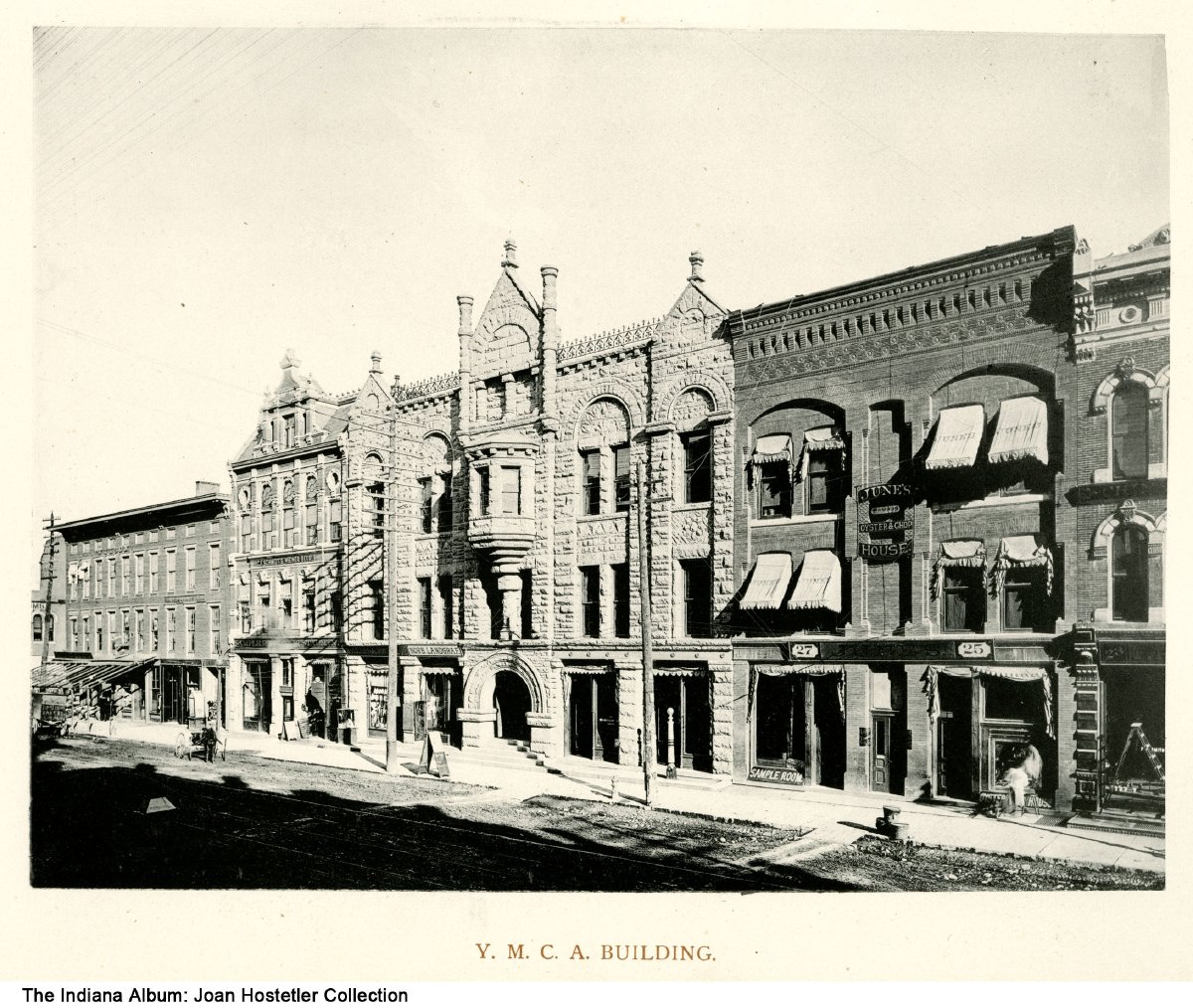The Young Men’s Christian Association (YMCA) began in London in 1844. A small group of evangelical Protestants opened the Indianapolis YMCA in 1854. The YMCA built its own building at 33-37 North Illinois Street in 1871. The YMCA had a religious mission and membership relied on active church members. Local ministers often accused the YMCA of duplicating their work. Early programming included a reading room, public lectures on Christian themes, daily and weekly interdenominational services, and charity work.

By the 1870s, the YMCA began to sever its church ties and increasingly focused its work on serving the poor and outcast. Members helped organize the Home for Friendless Women, the Indiana Boys’ and Girls’ Schools, a Newsboys’ and Bootblacks’ Home, temperance work, and mission Sunday schools for children and workers. The YMCA expanded to host social and recreational activities, and began to charge fees for member attendance and facility use. It built a five-acre athletic park, bowling alley, pool, and gym, and started a night school. As the organization’s emphasis shifted, mission work and lectures became less important and the reading room collection was absorbed into the public library.
College men formed a second branch at in the 1890s. African Americans started a prayer band in 1900, which eventually became the , one of the largest, most active African American branches in the country. Early in the 1900s, under the YMCA’s general secretary Arthur H. Godard, the association further distanced itself from direct charitable and religious aims. The YMCA remained Christian in spirit but emphasized moral and healthful options for men’s free time. Godard revived the lecture series to feature secular topics. He renamed them “Big Meetings” and drew large crowds to the . Athletics and recreation gradually overshadowed the lectures and religious services. In 1907, it erected a new headquarters building at the corner of Illinois and New York streets, where it remained until 1971. The new facility included a barbershop, swimming pool, bowling alley, cafe, and residence rooms. The Indianapolis News touted that the new YMCA turned “the moral tide in the old Levee,” a disreputable downtown area.

During World War I and World War II, the YMCA adjusted to meet emergency needs by providing special programs for soldiers. Women volunteered and after each war became full members. By the 1940s, the YMCA established four neighborhood branches on each side of the city and provided services mainly through local churches and schools. Programs expanded into clubs, athletic leagues, job and training programs, and social activities.
After World War II, the YMCA opened boys’ camps at Flat Rock River and neighborhood branches. The eastside branch built a new facility in 1959, the country’s first family YMCA. Membership soared in the 1950s and 1960s, the YMCA built new facilities for seven, mostly suburban, branches. Suburban branches increasingly served the recreational needs of Indianapolis. The Central YMCA closed in 1971 to open the Central Urban Outreach Program, which included two neighborhood sites and a mobile van program.
In 1992, the YMCA reopened downtown at the . In 2016, Indianapolis Colts owner Jim Irsay donated an undisclosed “multi-million dollar” amount to name the $24 million new City Way facility at 615 N. Alabama as the Irsay Family YMCA. Irsay also donated to new branches in Avondale Meadows and Pike Township. The OrthoIndy Foundation YMCA, also in Pike Township (2018) is the first in the nation to focus on the veterans’ community.
Many locations prefer to go by the moniker “The Y” rather than YMCA, although the nickname creates confusion with the related (YWCA). Today, the YMCA of Greater Indianapolis includes 12 full facility branches, 3 program branches, 4 program offices, a camping facility, and an administrative office in the Indianapolis area. The YMCA serves over 121,000 Hoosiers annually. The YMCA’s annual revenue of approximately $60 million comes from 80 percent membership fees, 5 percent investment income, and 15 percent grants and donations. The YMCA created the YMCA Foundation of Greater Indianapolis in 1966 to receive endowment gifts. The Foundation’s assets of approximately $18 million generate investment income that provides grants only to the YMCA.

Help improve this entry
Contribute information, offer corrections, suggest images.
You can also recommend new entries related to this topic.